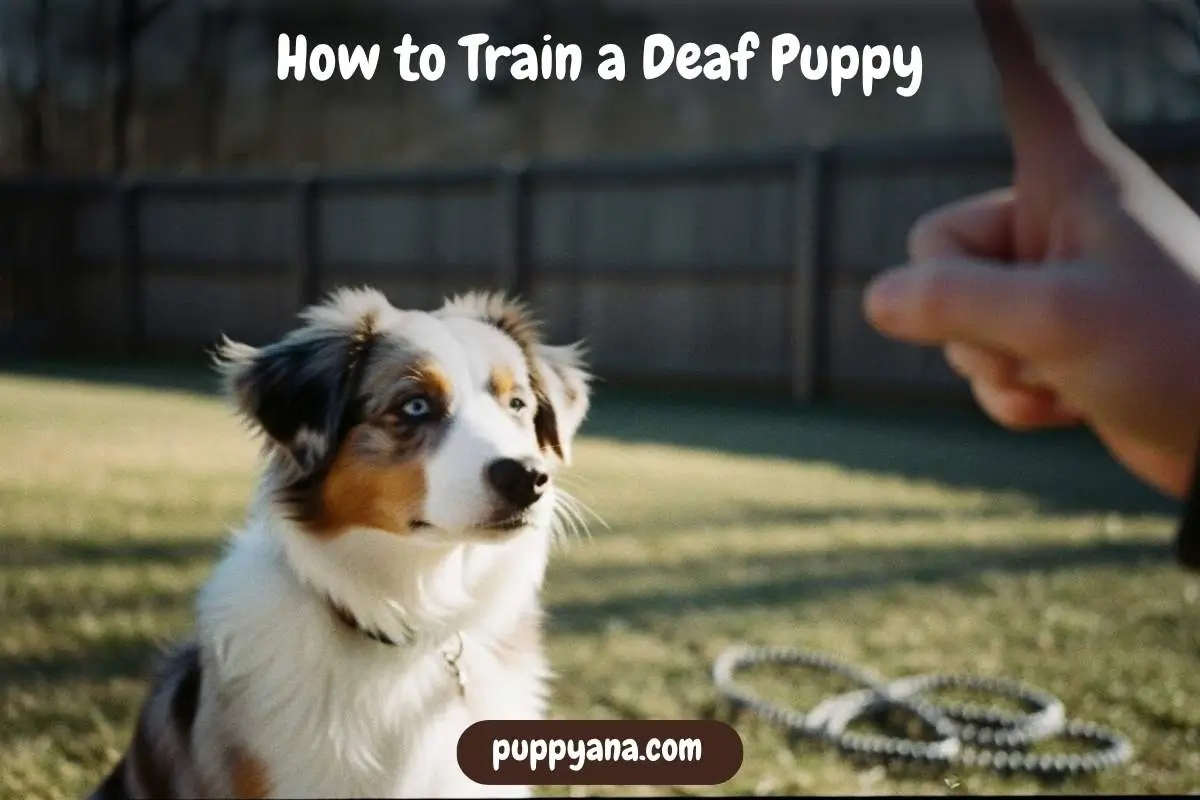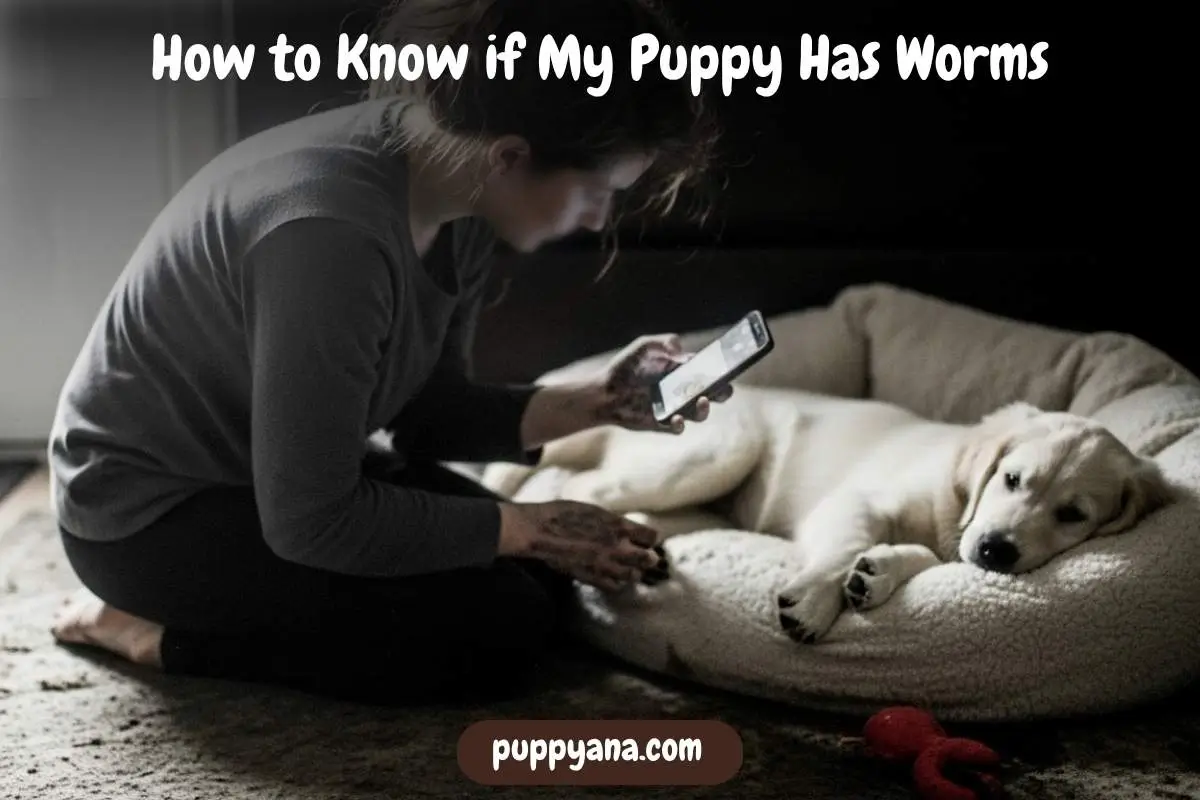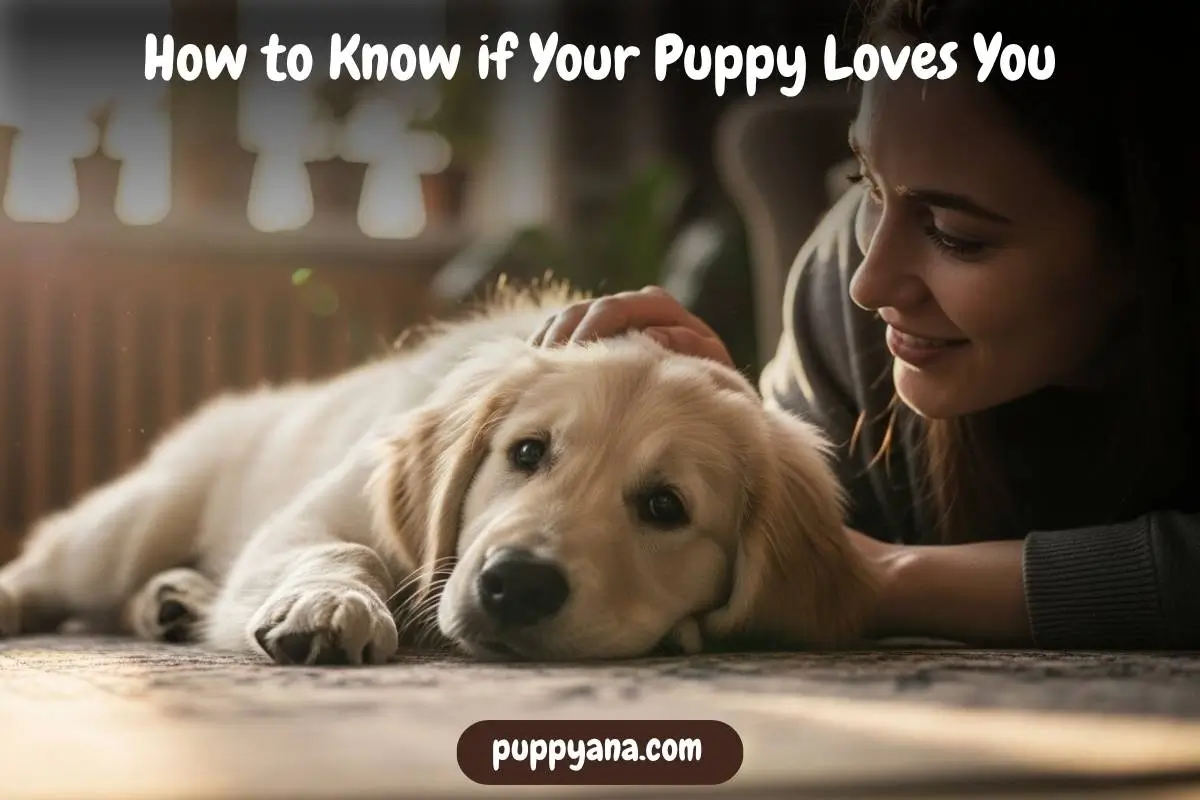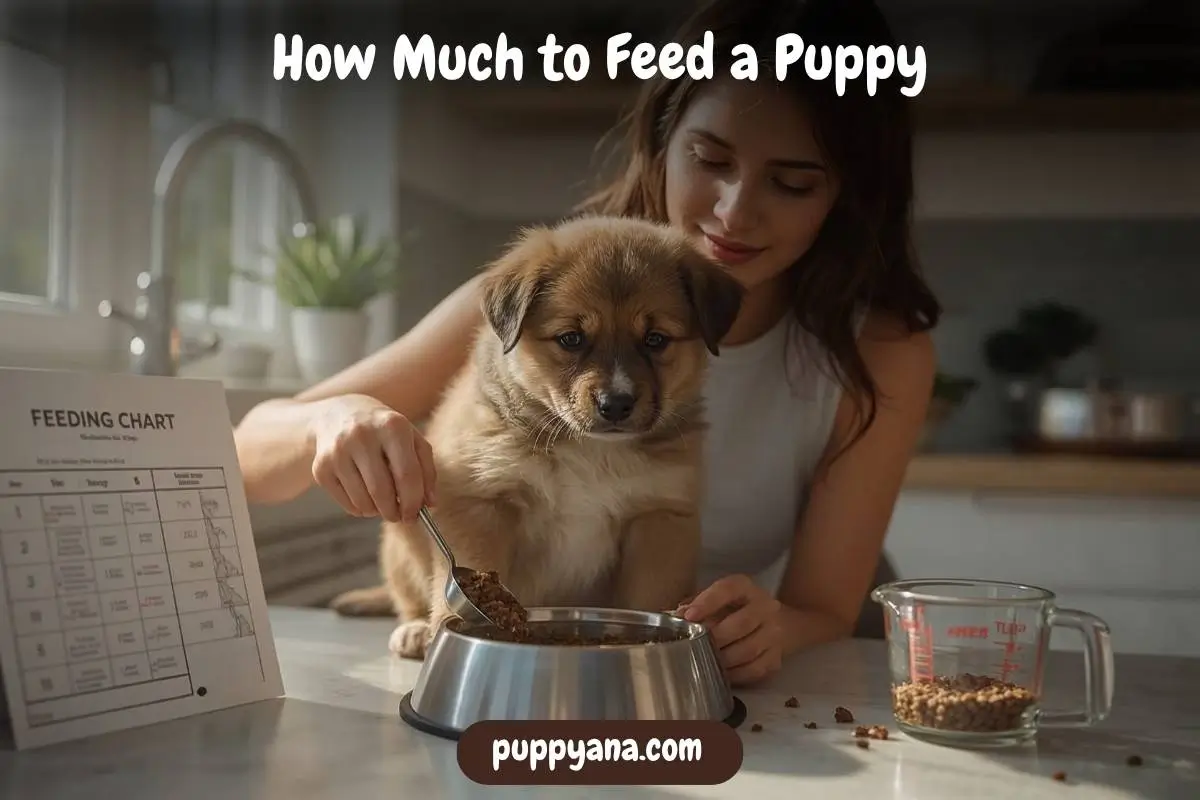Does your puppy chase your pants legs? Do they grab your hoodie strings every time you walk past?
If you’re searching for how to stop puppy biting clothes, you’re not alone. This is one of the most common struggles for new dog owners.
I know because I have been there. I’ve raised several puppies and helped families with this exact issue. For example, when I was fostering a 10-week-old Lab named Toby, he would bite my pajama pants like they were a tug toy. Cute at first, but eventually annoying and uncomfortable.
With the right training, I stopped the habit in just under two weeks. What worked for Toby can work for you too. And you don’t need to yell or punish your pup.
In this guide, you’ll learn:
- Why do puppies bite clothes
- How to stop the behavior with kind, proven methods
- What to avoid
- Real steps that work even if nothing else has so far
All tips are based on experience and supported by expert advice from AKC, PetMD, VCA Hospitals, and ASPCA.
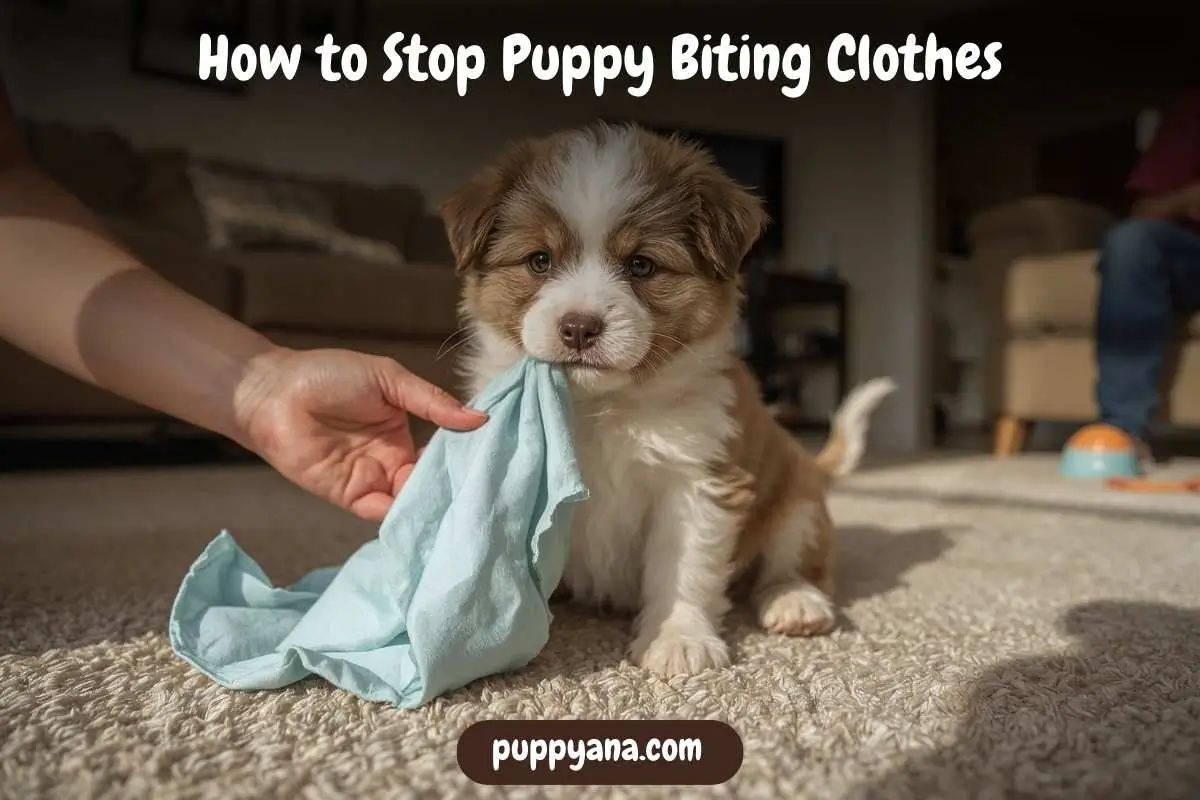
Table of Contents
ToggleHow to Stop Puppy Biting Clothes: Quick Answer
To stop a puppy from biting clothes, say a calm word like “no” or “eh-eh” as soon as it starts. Don’t pull your clothes away. Immediately give your puppy a toy to chew instead. Reward them with praise when they take the toy.
This should happen every time. Puppies learn what gets your attention and what brings good things.
These steps worked for Luna, a 10-week-old Australian Shepherd I fostered. After a few days of redirection and praise, she completely ignored my robes and sleeves.
Recommended reading: How to stop puppy nipping from the American Kennel Club.
Why Puppies Bite Clothes
People often ask:
- Why is my puppy obsessed with my sleeves?
- Why does my puppy bite pants when I walk?
- Will my puppy stop biting on their own?
Clothing biting is normal puppy behavior. It feels good and gets attention.
Teething
Puppies chew when their teeth are coming in. From 8 to 20 weeks, your pup will look for anything soft to bite. Clothes feel great on sore gums.
I kept a few frozen puppy teething toys nearby for Max, a Beagle-mix foster. Giving him something cold kept him off my sweater cuffs.
How to Stop Puppy Biting Clothes in Multi-Dog Homes
If you have more than one dog in the house, your puppy might nip at clothes even more. Puppies often get overexcited around other dogs. This can increase jumping, barking, and yes, clothing attacks.
Here’s what helps in real life:
- Supervise play between dogs and interrupt if clothes get involved
- Remove the clothing target (robes, long sleeves) during group play
- Redirect both dogs into a toy-based game like tug or fetch
- Use training gates or pens if one dog needs a break
When I fostered two puppies at once, I noticed that biting increased when they played together near people. By separating them during high-energy times and rotating training, we reduced clothing nips fast.
Learn how to manage puppy playtime and socialization with multi-dog households from the ASPCA.
Chase Instinct
Sleeves, scarves, and pant legs look like slow-moving toys. Puppies are natural chasers. Loose clothing becomes irresistible.
Overstimulation
Many puppies bite more in the morning and evening. This happens when they are wound up or overtired.
Jasper, a Retriever mix, had a pattern. He would grab my sleeve every night before bed. A few minutes of tug play and a frozen Kong completely changed that.
Accidental Encouragement
If your dog bites and you laugh or move faster, the game gets more fun. Even saying “no” in an excited voice can make it worse.
9 Simple Ways to Stop Puppy Biting Clothes
These are the exact steps I’ve used in homes with real puppies. They’re gentle, clear, and based on training experience and professional guidance.
1. Calmly Interrupt
Use a gentle voice. Say “no,” “eh-eh,” or “off” when your pup starts biting. Don’t yell. That adds more energy.
I did this with Toby (the Lab puppy) every time he grabbed my pants, and it made a huge difference.
2. Offer a Toy Right Away
Always have a toy nearby. Give it to your puppy the moment they stop biting your clothes.
Tip: I kept chew toys in each room so I wouldn’t have to run and get one when I needed it fast.
3. Freeze Your Body
If your dog is biting your sleeve or pants, stop moving. Don’t pull away. Pulling makes it feel like play.
When I did this with Bella, a young Husky mix, she lost interest faster and went for her tug toy instead.
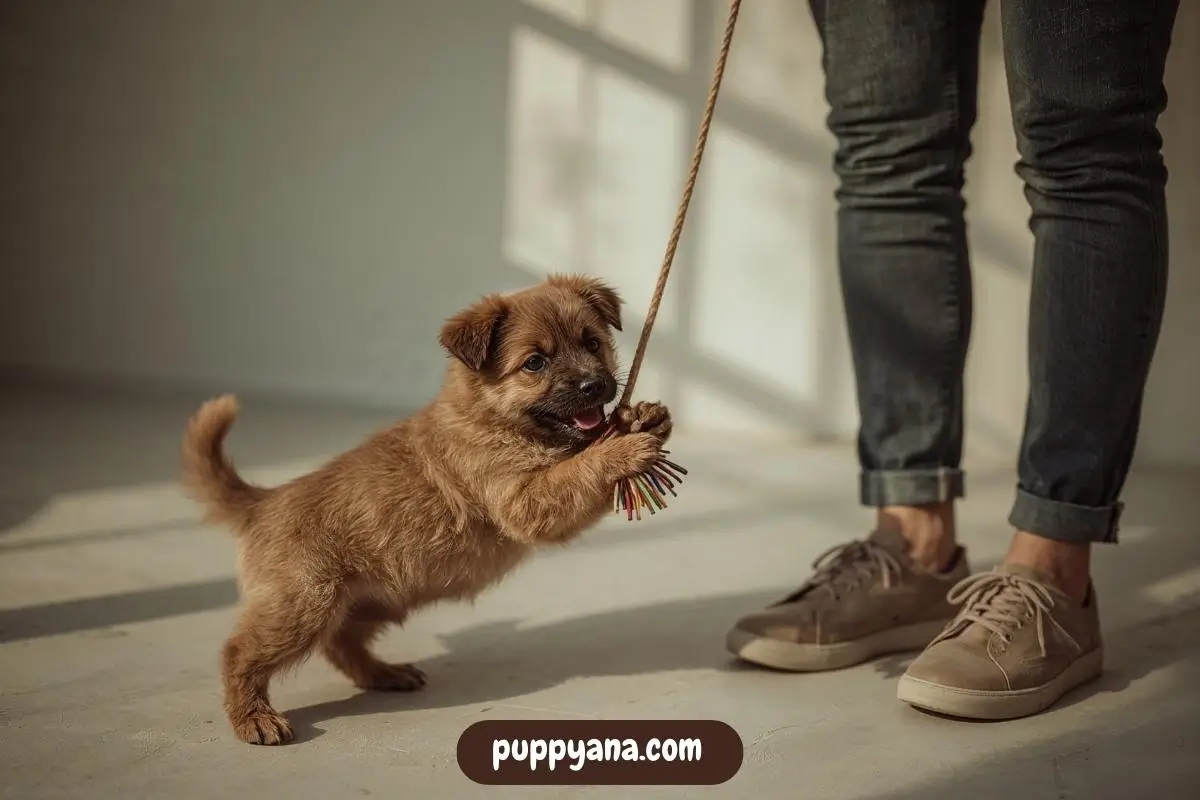
4. Praise the Right Choice
Say “yes” or “good” when your puppy chews the toy instead of your clothes. This builds a clear pattern for them.
Positive training helps puppies learn faster and feel safe.
5. Teach “Leave It”
Teaching “leave it” is very helpful for clothing biting. Start by using it with a treat on the floor. Then use it when your dog looks at your clothes.
Follow this AKC-approved “leave it” training plan to get started.
6. Use Tug and Movement Toys
Give your puppy something else to chase and bite. Long ropes and flirt poles are great for energy and redirection.
I played 5 minutes of tug with Luna every morning. She stopped going after my long pajama pants completely.
7. Avoid Loose Clothing
Skip scarves, robes, or long sleeves during play. Once your puppy has learned the rules, you can bring them back.
8. Use Reset Timeouts (Calmly)
If your pup keeps biting everything, give them a short reset in a crate or playpen. No yelling. Just quiet rest with a safe chew toy.
9. Be Consistent
Do the same thing every time your puppy bites. Reacting one way in the morning and a different way at night will confuse them.
It took me 12 days of the same response every time to teach Jasper not to bite my clothes. And it worked.
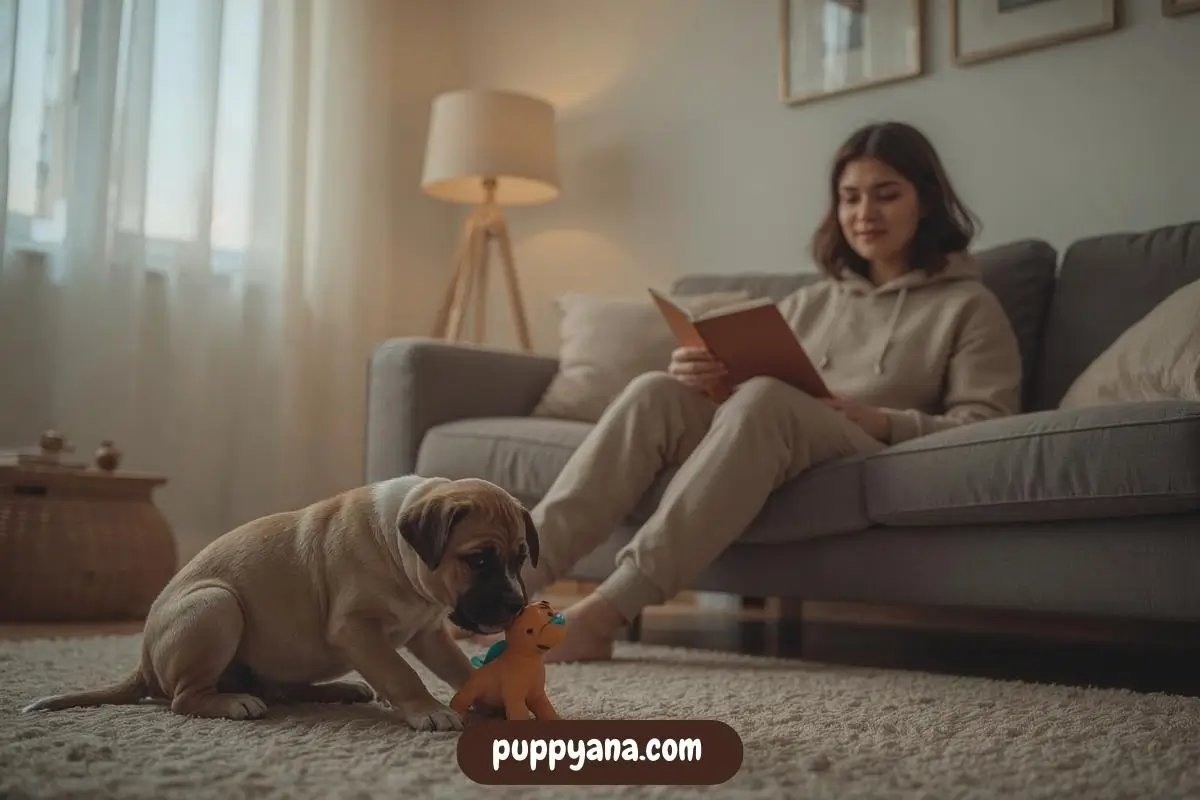
What Not to Do if Your Puppy Bites Your Clothes
Many well-meaning owners accidentally make biting worse by using outdated or overly harsh responses. These reactions might stop your puppy in the moment, but they don’t teach them what to do instead.
Watch out for these common mistakes:
| What Not to Do | Why It’s a Problem |
|---|---|
| Yelling or clapping loudly | Increases stress and excitement |
| Hitting the nose or mouth | Creates fear, may lead to worse behavior |
| Holding their mouth closed | Dangerous and ineffective |
| Pulling your clothes away quickly | Triggers chasing and tugging instincts |
One client I worked with used to scold their puppy every time it bit. The biting only escalated. But when we switched to calm redirection plus praise, the behavior changed in three days.
Use redirection, structure, and patience over punishment. It’s better for both of you.
Additional guidance is available in this guide to dealing with puppy biting behavior.
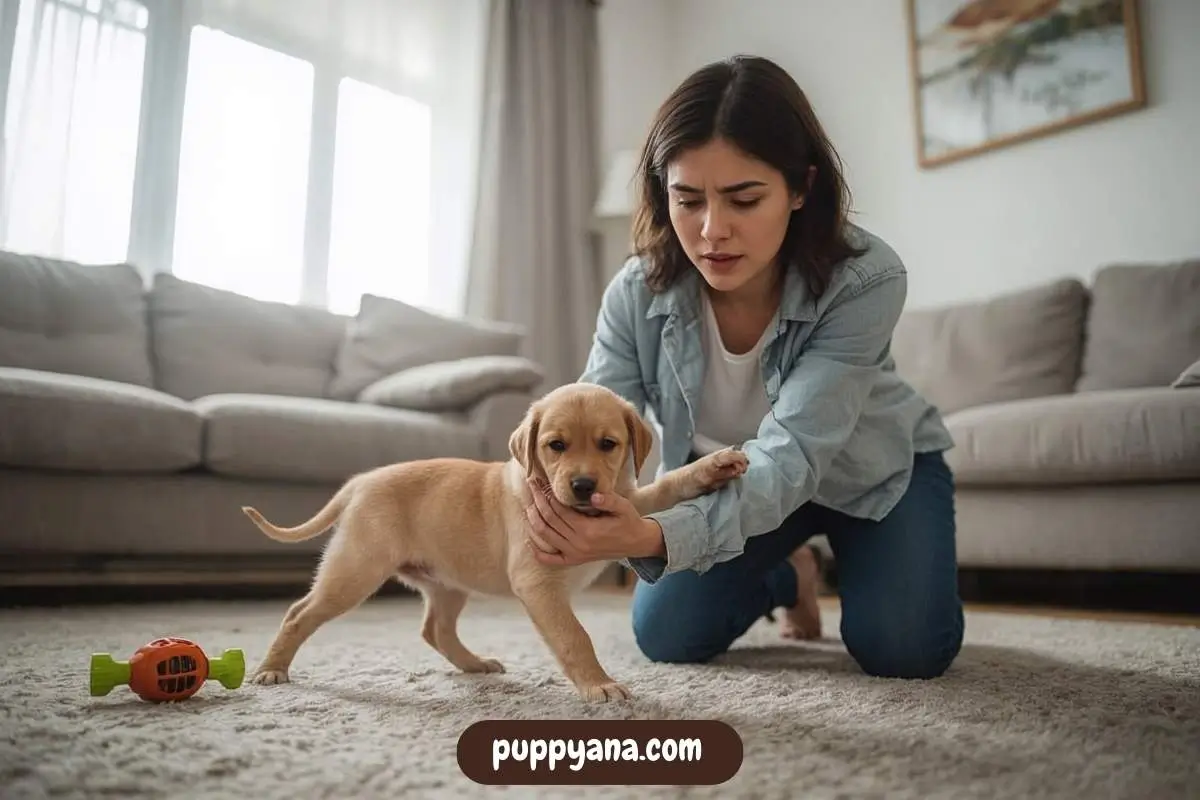
Why Does My Puppy Bite More in the Morning or Evening?
You are not imagining it. Puppies often get the zoomies or cranky bites right after waking up or right before bedtime.
Try adjusting your routine.
Morning routine example:
- Potty break
- Quick play (like tug or training)
- Give frozen Kong or breakfast in a snuffle mat
Evening wind-down:
- Sniff walk before dark
- Chew toy after dinner
- No wild games after 7 PM
This worked amazingly for Toby during his bedtime biting phase.
Best Chew Toys to Replace Clothing Biting
Not all chew toys work the same. Some are too hard for teething mouths. Others don’t feel good or keep your puppy’s interest.
Here are chew toys I’ve used with great success:
- Frozen rubber toys (like KONG Puppy) – Soothes teething, long-lasting
- Soft rope toys – Great alternative when puppies go for hoodie strings
- Flavored nylabones (puppy version) – Adds scent and taste
- Snuffle balls – Encourage foraging, reduce boredom
Tip: Rotate toys every other day. Keeping things “new” helped Toby stay focused on toys instead of chewing my sleeves.
How to Train Guests to Handle Clothing Biting
Visitors and kids can sometimes respond the wrong way to puppy biting. If your guest pulls away and yells, your puppy may try even harder next time.
Here’s how I coach friends who visit:
- Say “Stand still and let me handle it” if biting starts
- Hand visitors a toy to use immediately when the puppy approaches
- Teach guests not to wave sleeves or tease the dog playfully
- Crate or gate your puppy during high-energy guest visits
Real-life tip: When I had Toby and a guest who wore long skirts, I asked them to wear jeans and keep a tug toy in hand. It made the visit smoother, and Toby learned much faster.
You can even write a quick rule list on your fridge with simple “do this, not that” notes for friends and family.
When to Get Help
Clothing biting is normal. But in some cases, it can signal deeper stress or frustration.
Contact a certified trainer or talk to your vet if:
- Your puppy growls or guards clothing
- Biting has gotten worse with age
- Nothing works, and you feel overwhelmed
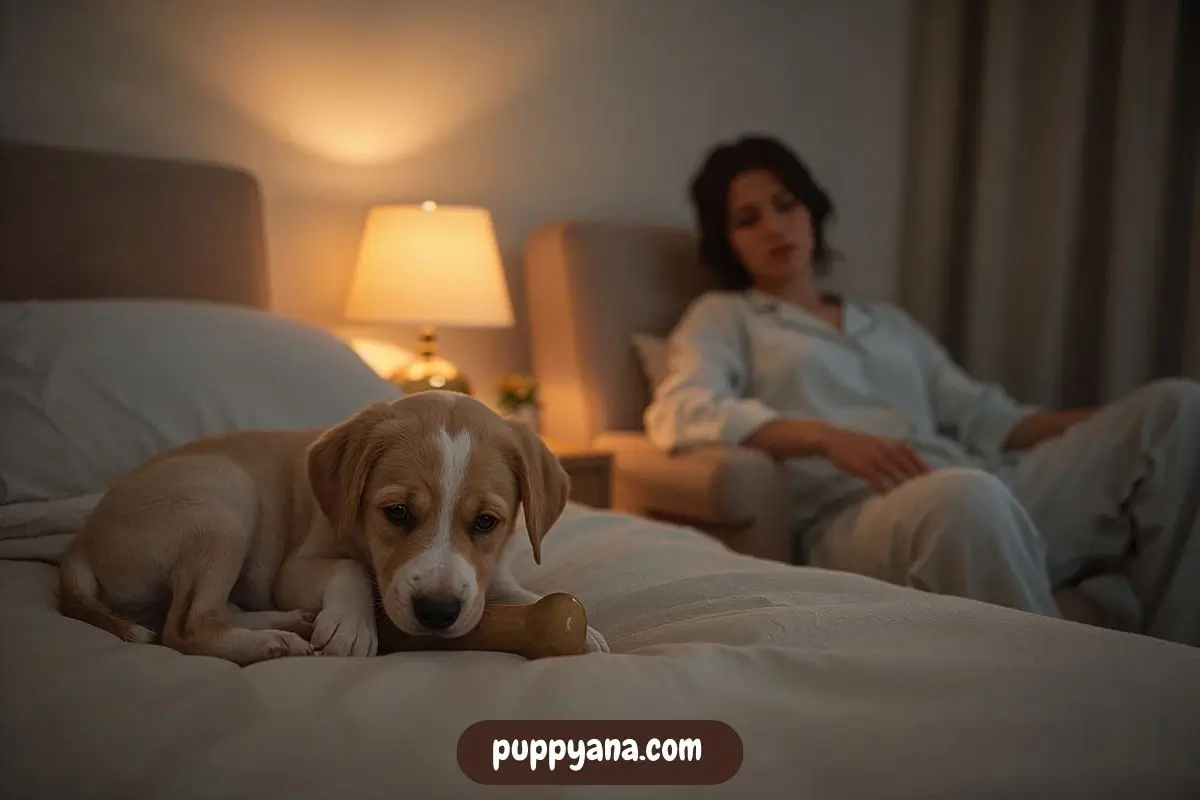
Conclusion
Puppy biting isn’t your fault. It’s part of their learning process. Your job is to guide and redirect them kindly and clearly.
You now have 9 steps that work in real-world homes. I’ve used them with my own pups and on dozens of successful training sessions.
Stick with it. Stay calm and be consistent. And remember, it gets easier, day by day.
PuppyAna also backs many of these gentle techniques for first-time puppy owners looking for trusted, pet-safe methods.
You’ve got this.
Frequently Asked Questions
Why does my puppy bite my clothes more than toys?
Clothes move and smell interesting. They are also easier to grab. Use toys with the same texture and be consistent with redirection.
How do I stop my puppy from attacking my sleeves?
Stand still. Say “no” or “eh-eh.” Offer a chew toy quickly. Praise when they take it instead.
Can I say “no” when my puppy bites me?
Yes, but keep the tone calm. Don’t yell. Always follow up with redirection.
At what age do puppies stop biting everything?
Most stop by 5 to 6 months. But without redirection, biting habits can last longer.
Should I punish my puppy for biting my clothes?
No. Punishment increases fear and stress. Use gentle training and reward better behavior.

